- TOP
- Search Criteria
- Yakatabune, Cruising Tokyo on a Traditional Japanese Boat
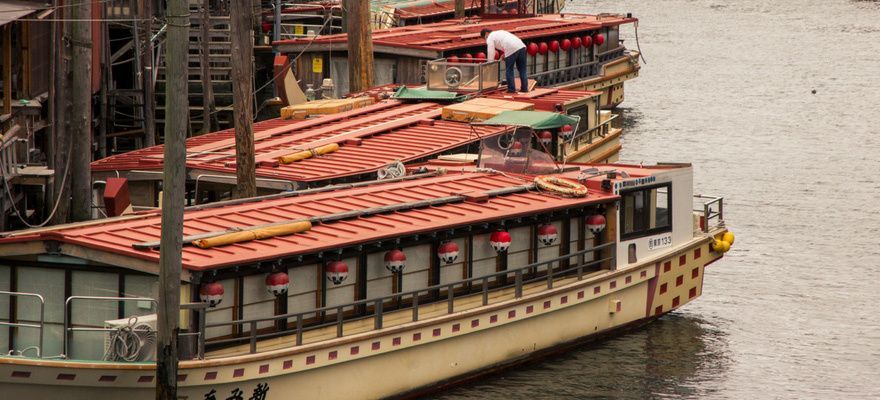
STORY
Yakatabune, Cruising Tokyo on a Traditional Japanese Boat
- TOKYO
- ASAKUSA
- DINING
- SIGHTSEEING
- EXPERIENCE
- CULTURE
- SPECIAL
- YAKATABUNE
- TEMPURA
- TRADITIONAL_CULTURE
- TRADITIONAL_CUISINE
- SUMIDA_RIVER
- ASAKUSABASHI
Lavishly decorated boats, used to entertain guests by rich merchants and nobles were all the rage back in the Edo period (1603-1868). Tatami mats inside and bright red lanterns hanging outside were their distinctive features. Although they went from exclusive form of entertainment to a popular sightseeing experience available to everybody, yakatabune are still in use today and they retain that traditional feel.

Nowadays yakatabune populate Tokyo's rivers and canals and color the city's night with their red lanterns. The word 'yakatabune' literally means 'home-style boat' and they are made to resemble an upper class Japanese home.
Cruises typically range from 2 to 3 hours long and they include a traditional Japanese meal with an all-you-can-drink system. Different kinds of cruises are held each season; cherry blossom viewing in spring, fireworks festivals in summer, moon viewing in autumn and New Year's parties in winter are just some of them. Popular routes include the Asakusa area with its old town feel and the Odaiba area (especially at night), through the skyscrapers of the Tokyo bay.
Here's a photo report from my yakatabune experience. I went on a late spring lunch cruise on the Sumida river offered by a company called Funayado Komatsuya. At the end of the article you'll also find information on how to book a cruise with them.

My journey started in the district of Asakusabashi, where the Kanda river meets the Sumida river. Here a lot of wooden shacks stand over the water and I could see all the boats from different yakatabune companies. It already felt like I wasn't in present day Tokyo anymore.
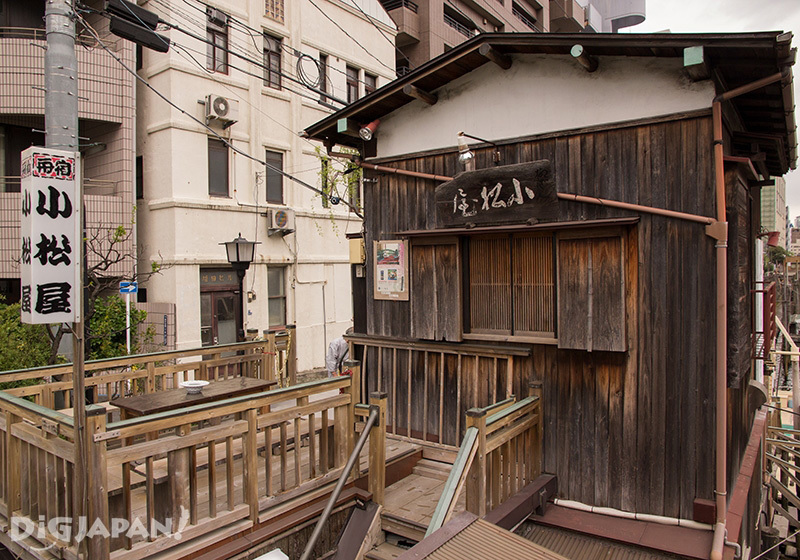
This is Funayado Komatsuya's office! They have been running this business for four generations since 1927, back when this area was a thriving entertainment district.
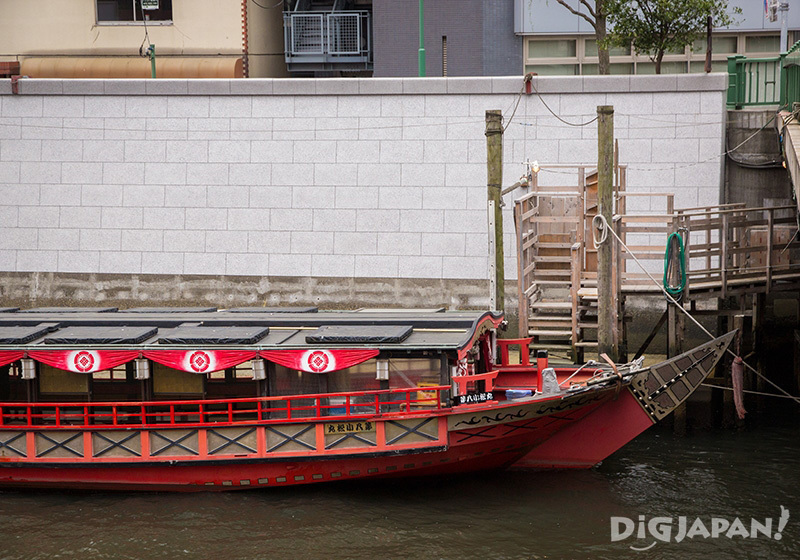
For our cruise we were going to use this beautiful bright red boat.

Down a narrow wooden dock and staircase, we were helped onto the boat by our captain.
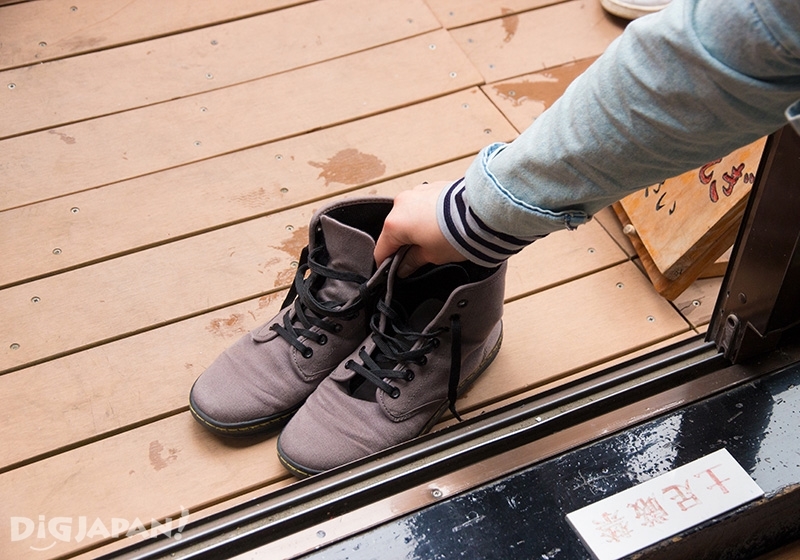
Inside the boat are tatami mats, like a Japanese house, so we took our shoes off before entering.
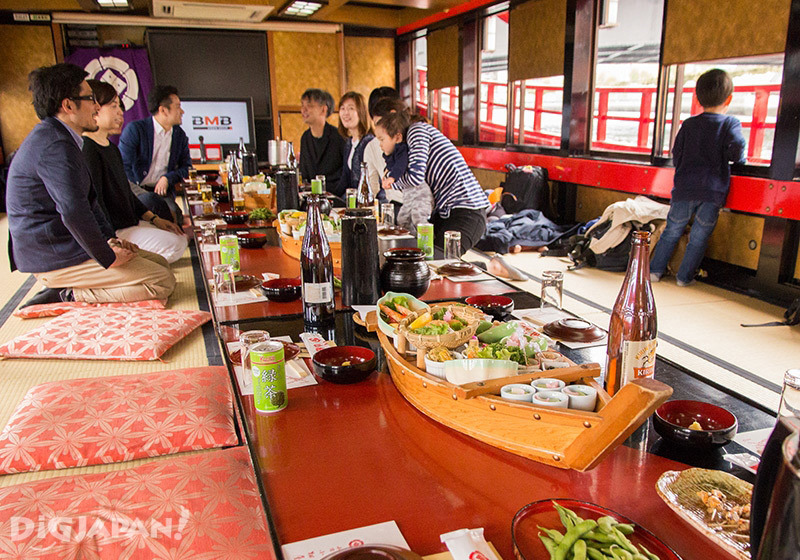
The appetizers were already laid out on the tables. Dozens of tiny plates and bowls were arranged on miniature wooden boats. We started getting cozy while our drinks arrived.

We made sure that everybody had a drink and then...

"Kanpai!"
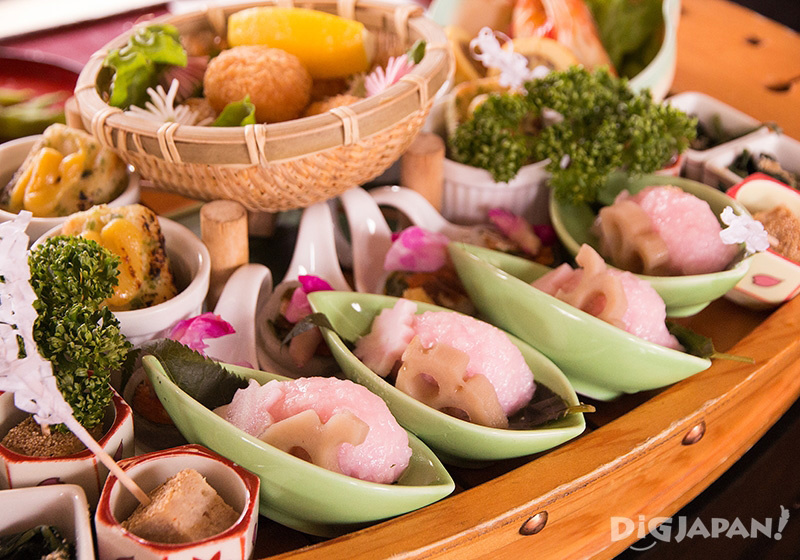
The appetizers were delicious. Funayado Komatsuya always puts a lot of thought into the food, and they change the menu depending on the season. They like to always include a few dishes from the Edo period in the menu, too.
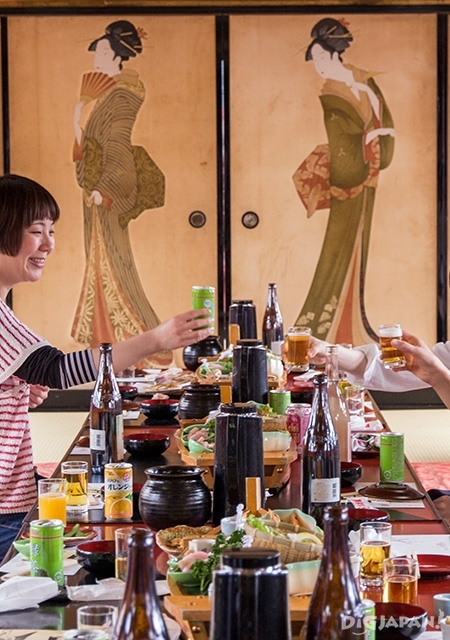
The door to the main hall was decorated with gorgeous Japanese paintings. The whole interior made me feel like we were guests of some Japanese nobleman.

While we enjoyed our first drinks and food, the boat started sailing down the Sumida river towards Asakusa. Soon the Sky Tree tower and the golden Asahi building came into view.
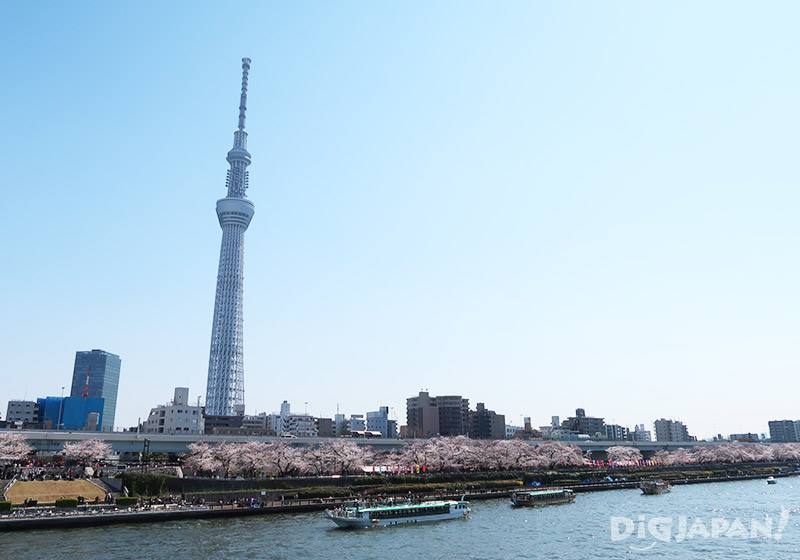 The boat stopped in front of a row of cherry blossoms. We were told that our tempura was being prepared so we decided to enjoy the breeze outside while we waited.
The boat stopped in front of a row of cherry blossoms. We were told that our tempura was being prepared so we decided to enjoy the breeze outside while we waited.

The cherry blossoms on the river bank can be admired from late March to mid-April.
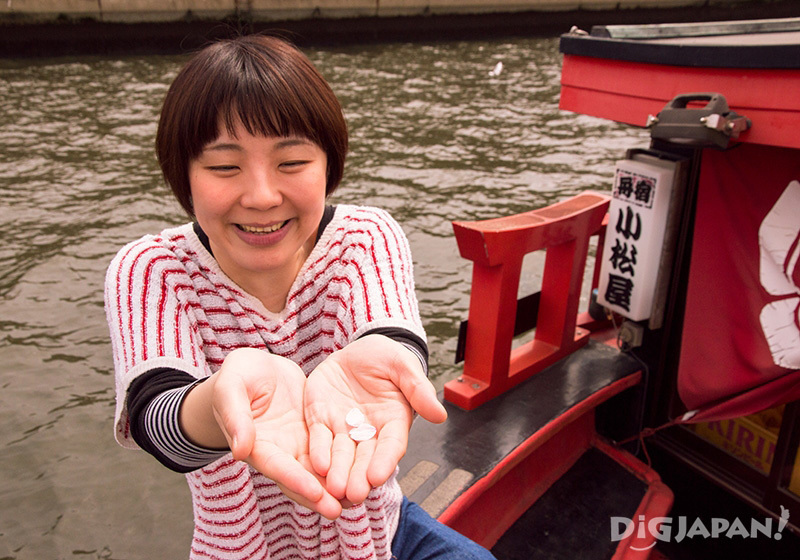
Unfortunately at the time of our visit the cherry blossoms were almost all gone, but we caught some petals that flew all the way to our boat.
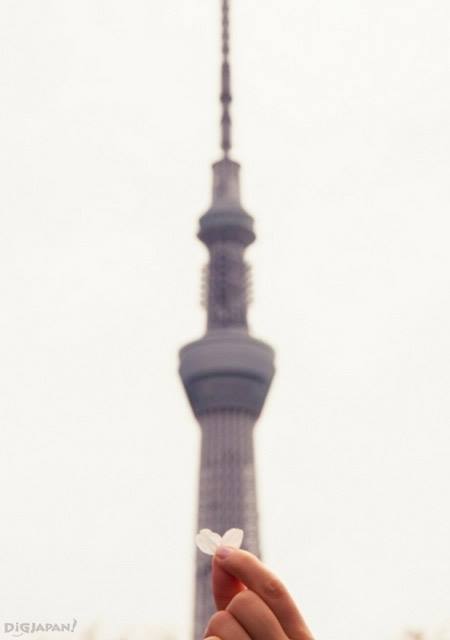
We had a lot of fun just enjoying the gentle swaying of the boat, the spring breeze and the beautiful view. After a while we were called back inside to enjoy our freshly made tempura.

The crew on a yakatabune are called the sendo. The number of sendo changes depending on the number of guests. It's their job to pilot the boat, make the food and also serve the customers! In our case, our boat was run by two of them.
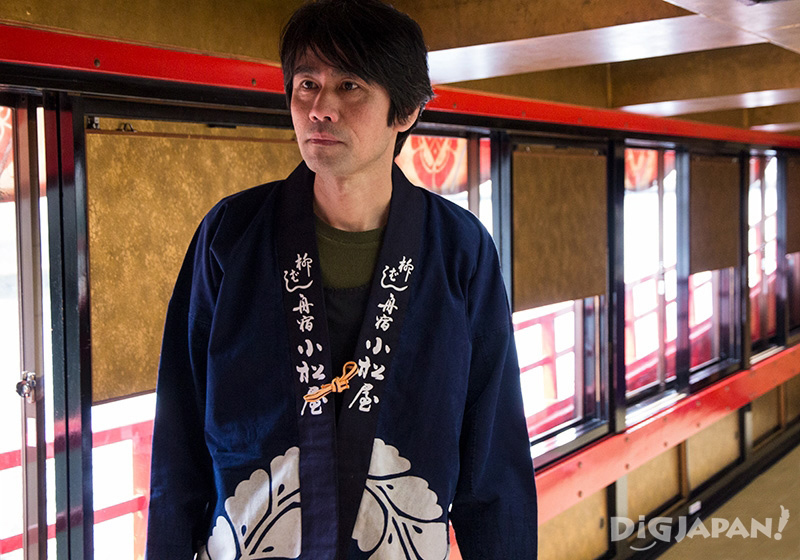
This is our sendo, Oya-san. He's the one who prepared our tempura while taking care of the boat.
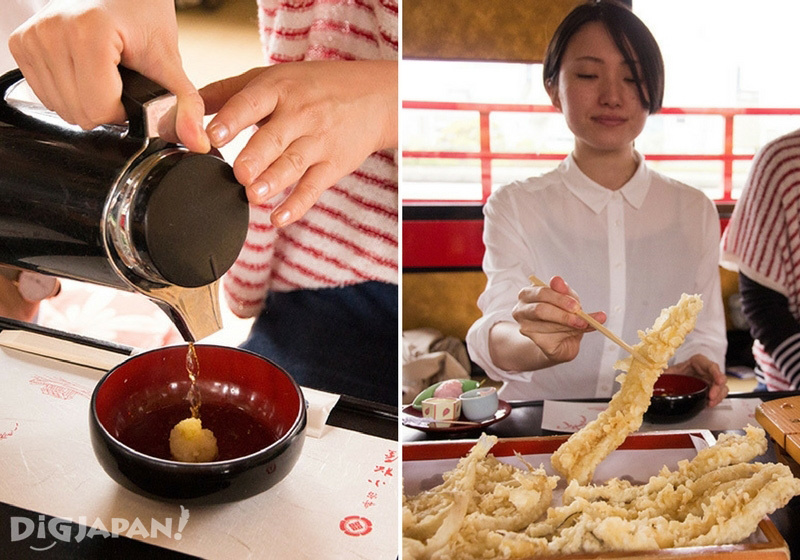
To eat tempura, pour some tsuyu sauce into your bowl and mix it with the grated daikon radish.

Dip the tempura into the sauce and enjoy!
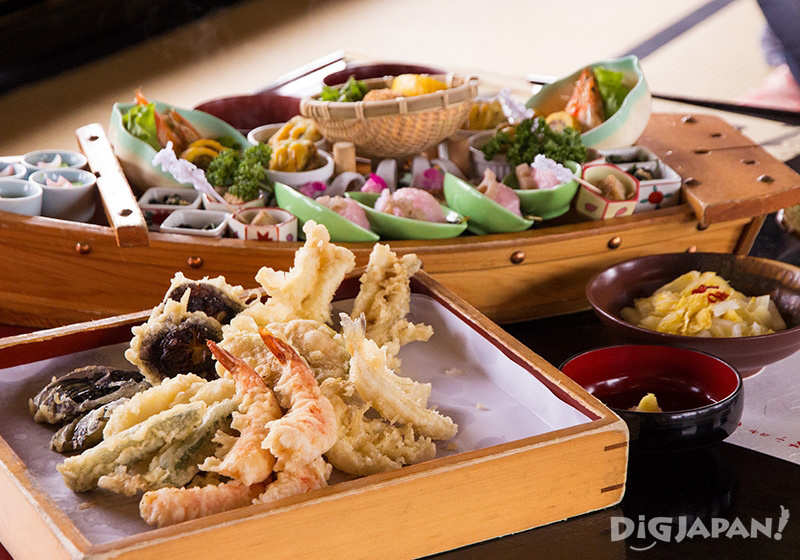
The tempura course included various kinds of fish, shrimp, and a variety of vegetables. We were also served pickles, rice, and miso soup on the side. Everything was outstanding!
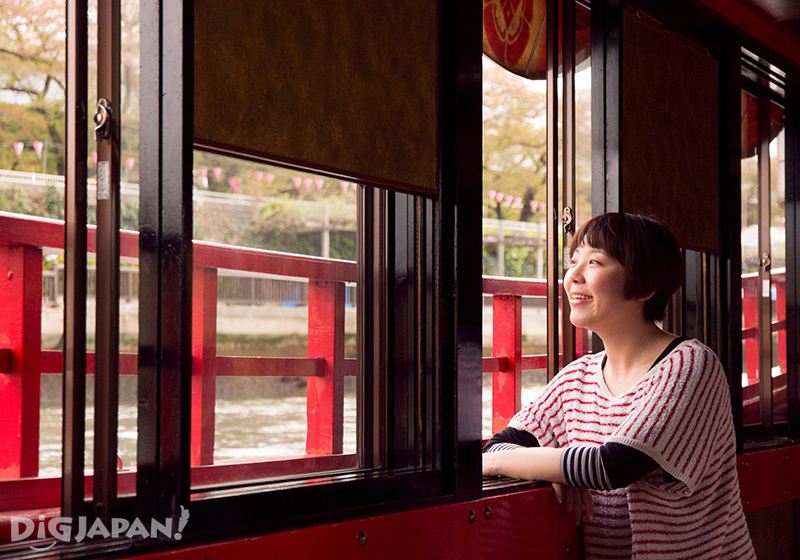
Being in this boat really felt like going back in time. And we got to enjoy Tokyo from another point of view.
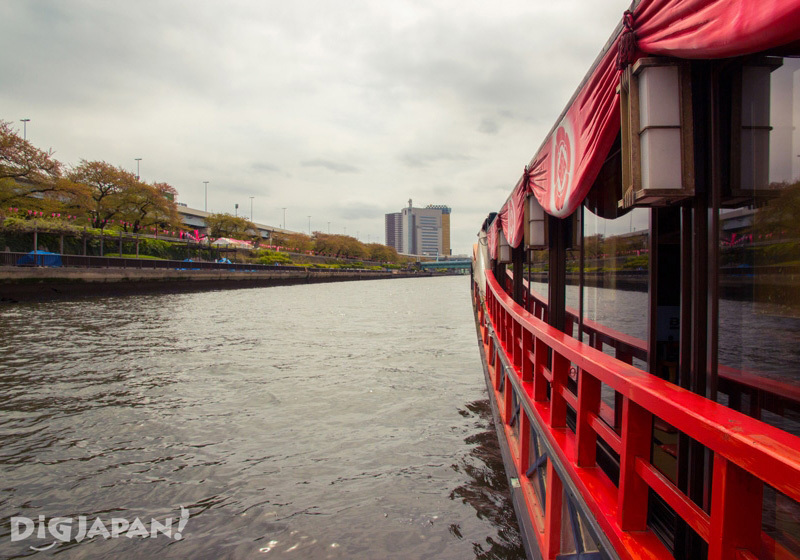
After about two and a half hours the boat slowly made its way back. Feeling satisfied from the grandiose banquet, I just spent the rest of the cruise with my head out of the window.

There was a 'thank you' note by the door when we exited the boat and they also gave us a commemorative handkerchief. I felt nostalgic already.
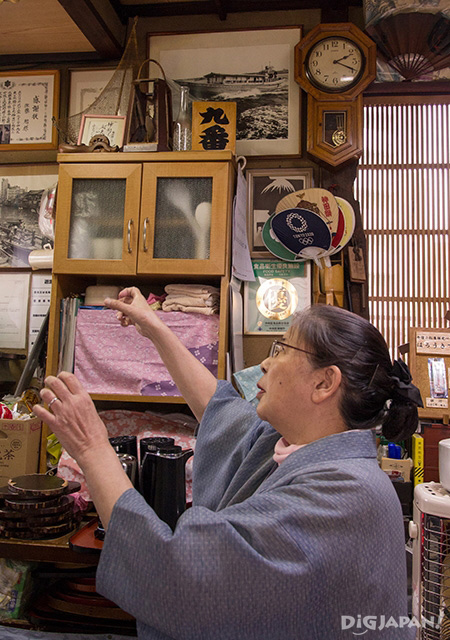
Before going back home we had the pleasure to talk with the owner's wife. She told us about how they went through tough periods in the past, facing problems like the pollution of the rivers due to Japan's rapid economic growth back in the 1960s. Up on their wall is a picture of one of their boats back in the 1950s. "The boat is going through Odaiba," she explained, "and there was nothing there back then". Tokyo sure has changed quickly, but I am happy that businesses like Funayado Komatsuya have survived the passage of time and they're still offering these unique experiences.

People at Funayado Komatsuya were very kind. They don't speak much English but they always make a great effort to accommodate international customers. If you'd like to try one of their cruises make sure you call well in advance to secure a place.
Address: 2-27-22 Higashi Nihonbashi, Chuo-ku, Tokyo
Access: 5 min. walk from JR Asakusabashi Station East Exit
Holidays: no fixed holidays
Website (Japanese-only): http://www.komatuya.net
Price: 10,800 yen/person for groups of 15 or more people
Reservations: 03-3851-2780 (groups over 15 people)
Yakatabune cruises usually start at around 10,000 yen per person. You can reserve an entire boat for a group of 15 or more, or share a boat with other people. Advance reservations are always required! Some companies have an English website but most of them (especially the smaller ones) only speak Japanese. I recommend asking a Japanese friend or your hotel staff to book for you.
This is a great way to see Tokyo, experience the Japanese hospitality and sample traditional food. I recommend including a yakatabune cruise in your trip for some unique memories!

About the author
Laura is an Italian living and working in Tokyo. She loves exploring hidden and unknown places, taking pictures and listening to Punk Rock music. When she’s not busy doing the above, she might enjoy a craft beer or play the sanshin (an Okinawan instrument similar to a shamisen).
Joint photography & interview
SHUN GATE
Shun, in Japanese, refers to the period of time when raw ingredients are in season. Taking inspiration from this concept SHUN GATE is a gate to the stories of the people, techniques, technologies, and the lands that make up Japanese food culture and its seasonal characteristics.
SHUNGATE Website(Yakatabune):http://shun-gate.com/en/power/power_style_54.html
SHUNGATE Movie(Yakatabune):http://shun-gate.com/movie/movie_38.html
SHUNGATE facebook:https://www.facebook.com/shungate.en/

Nowadays yakatabune populate Tokyo's rivers and canals and color the city's night with their red lanterns. The word 'yakatabune' literally means 'home-style boat' and they are made to resemble an upper class Japanese home.
Cruises typically range from 2 to 3 hours long and they include a traditional Japanese meal with an all-you-can-drink system. Different kinds of cruises are held each season; cherry blossom viewing in spring, fireworks festivals in summer, moon viewing in autumn and New Year's parties in winter are just some of them. Popular routes include the Asakusa area with its old town feel and the Odaiba area (especially at night), through the skyscrapers of the Tokyo bay.
Here's a photo report from my yakatabune experience. I went on a late spring lunch cruise on the Sumida river offered by a company called Funayado Komatsuya. At the end of the article you'll also find information on how to book a cruise with them.

My journey started in the district of Asakusabashi, where the Kanda river meets the Sumida river. Here a lot of wooden shacks stand over the water and I could see all the boats from different yakatabune companies. It already felt like I wasn't in present day Tokyo anymore.

This is Funayado Komatsuya's office! They have been running this business for four generations since 1927, back when this area was a thriving entertainment district.

For our cruise we were going to use this beautiful bright red boat.

Down a narrow wooden dock and staircase, we were helped onto the boat by our captain.

Inside the boat are tatami mats, like a Japanese house, so we took our shoes off before entering.

The appetizers were already laid out on the tables. Dozens of tiny plates and bowls were arranged on miniature wooden boats. We started getting cozy while our drinks arrived.

We made sure that everybody had a drink and then...

"Kanpai!"

The appetizers were delicious. Funayado Komatsuya always puts a lot of thought into the food, and they change the menu depending on the season. They like to always include a few dishes from the Edo period in the menu, too.

The door to the main hall was decorated with gorgeous Japanese paintings. The whole interior made me feel like we were guests of some Japanese nobleman.

While we enjoyed our first drinks and food, the boat started sailing down the Sumida river towards Asakusa. Soon the Sky Tree tower and the golden Asahi building came into view.


The cherry blossoms on the river bank can be admired from late March to mid-April.

Unfortunately at the time of our visit the cherry blossoms were almost all gone, but we caught some petals that flew all the way to our boat.

We had a lot of fun just enjoying the gentle swaying of the boat, the spring breeze and the beautiful view. After a while we were called back inside to enjoy our freshly made tempura.

The crew on a yakatabune are called the sendo. The number of sendo changes depending on the number of guests. It's their job to pilot the boat, make the food and also serve the customers! In our case, our boat was run by two of them.

This is our sendo, Oya-san. He's the one who prepared our tempura while taking care of the boat.

To eat tempura, pour some tsuyu sauce into your bowl and mix it with the grated daikon radish.

Dip the tempura into the sauce and enjoy!

The tempura course included various kinds of fish, shrimp, and a variety of vegetables. We were also served pickles, rice, and miso soup on the side. Everything was outstanding!

Being in this boat really felt like going back in time. And we got to enjoy Tokyo from another point of view.

After about two and a half hours the boat slowly made its way back. Feeling satisfied from the grandiose banquet, I just spent the rest of the cruise with my head out of the window.

There was a 'thank you' note by the door when we exited the boat and they also gave us a commemorative handkerchief. I felt nostalgic already.

Before going back home we had the pleasure to talk with the owner's wife. She told us about how they went through tough periods in the past, facing problems like the pollution of the rivers due to Japan's rapid economic growth back in the 1960s. Up on their wall is a picture of one of their boats back in the 1950s. "The boat is going through Odaiba," she explained, "and there was nothing there back then". Tokyo sure has changed quickly, but I am happy that businesses like Funayado Komatsuya have survived the passage of time and they're still offering these unique experiences.

This is what an old yakatabune looked like! (photo courtesy of Funayado Komatsuya)
People at Funayado Komatsuya were very kind. They don't speak much English but they always make a great effort to accommodate international customers. If you'd like to try one of their cruises make sure you call well in advance to secure a place.
Information
Funayado Komatsuya | 舟宿小松屋Address: 2-27-22 Higashi Nihonbashi, Chuo-ku, Tokyo
Access: 5 min. walk from JR Asakusabashi Station East Exit
Holidays: no fixed holidays
Website (Japanese-only): http://www.komatuya.net
Price: 10,800 yen/person for groups of 15 or more people
Reservations: 03-3851-2780 (groups over 15 people)
Yakatabune cruises usually start at around 10,000 yen per person. You can reserve an entire boat for a group of 15 or more, or share a boat with other people. Advance reservations are always required! Some companies have an English website but most of them (especially the smaller ones) only speak Japanese. I recommend asking a Japanese friend or your hotel staff to book for you.
This is a great way to see Tokyo, experience the Japanese hospitality and sample traditional food. I recommend including a yakatabune cruise in your trip for some unique memories!

About the author
Laura is an Italian living and working in Tokyo. She loves exploring hidden and unknown places, taking pictures and listening to Punk Rock music. When she’s not busy doing the above, she might enjoy a craft beer or play the sanshin (an Okinawan instrument similar to a shamisen).
Joint photography & interview
SHUN GATE
Shun, in Japanese, refers to the period of time when raw ingredients are in season. Taking inspiration from this concept SHUN GATE is a gate to the stories of the people, techniques, technologies, and the lands that make up Japanese food culture and its seasonal characteristics.
SHUNGATE Website(Yakatabune):http://shun-gate.com/en/power/power_style_54.html
SHUNGATE Movie(Yakatabune):http://shun-gate.com/movie/movie_38.html
SHUNGATE facebook:https://www.facebook.com/shungate.en/

Liked this story? Like DiGJAPAN!
on Facebook for daily updates!
THIS ARTICLE IS BASED ON INFORMATION FROM 05 22,2018 Author:DiGJAPAN! Editorial Team













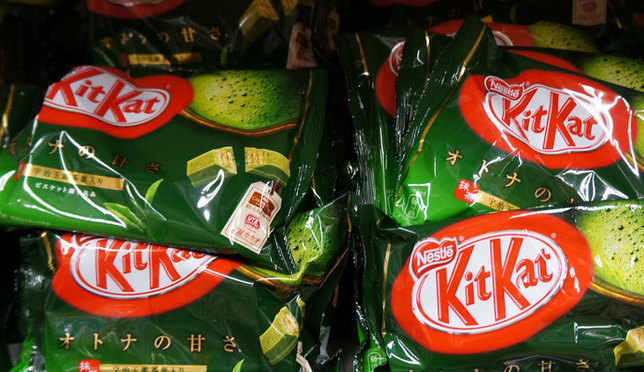

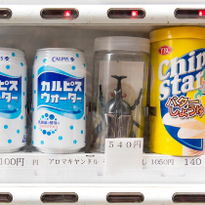
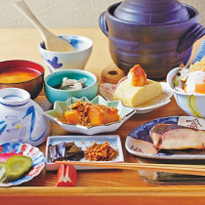





NEW COMMENT | 0 COMMENTS
Open a DiGJAPAN!
account to comment.
Open a DiGJAPAN! Account